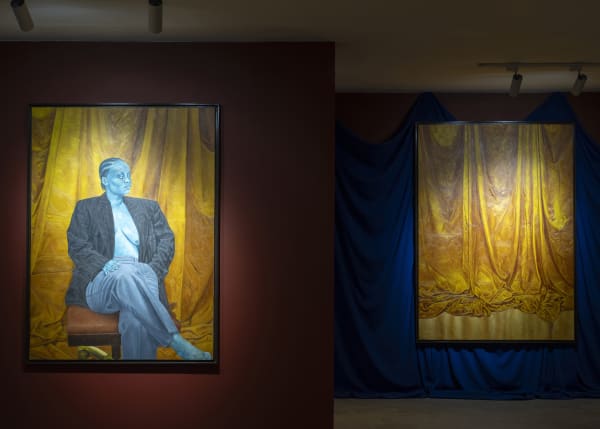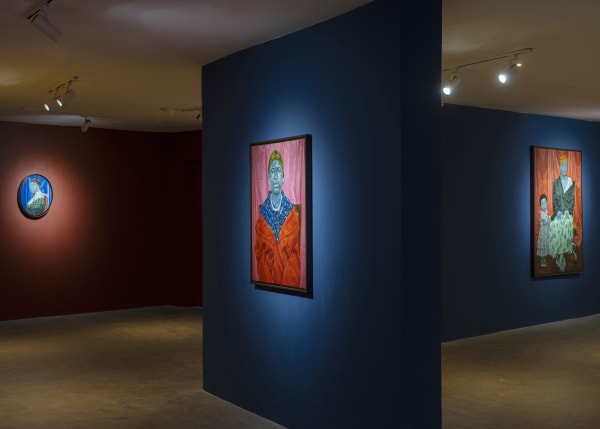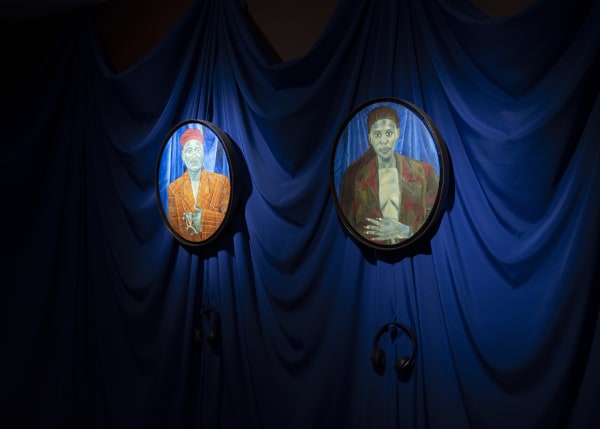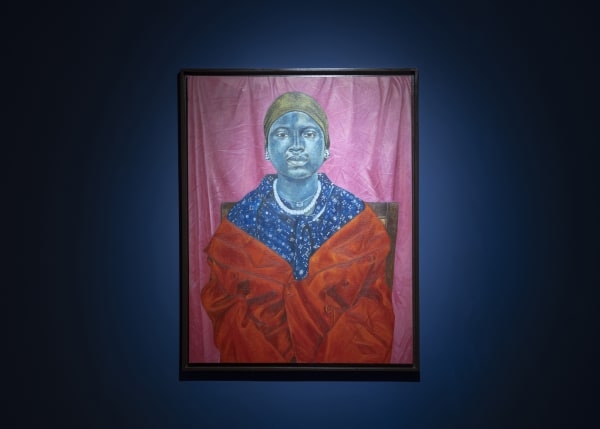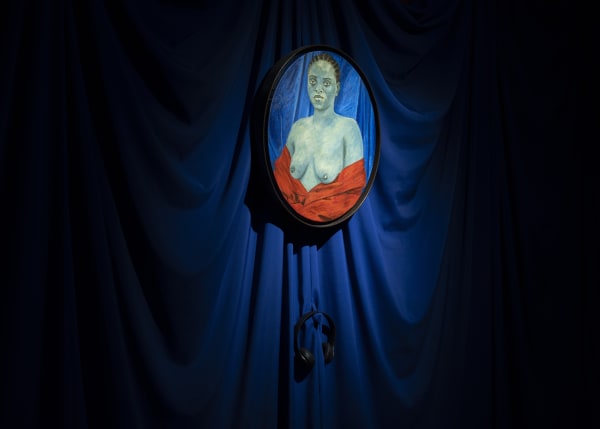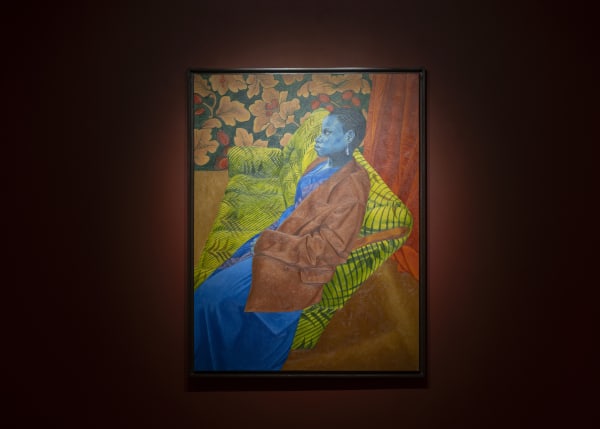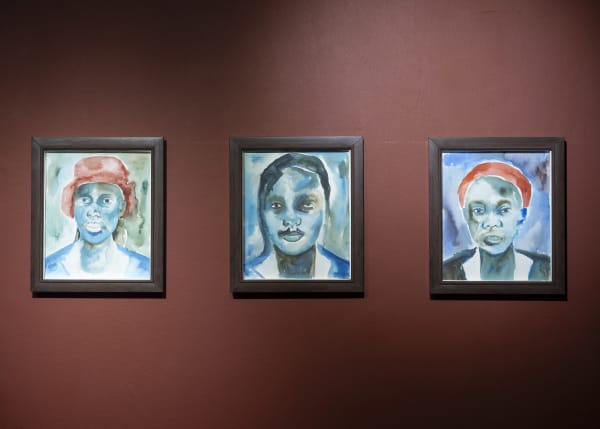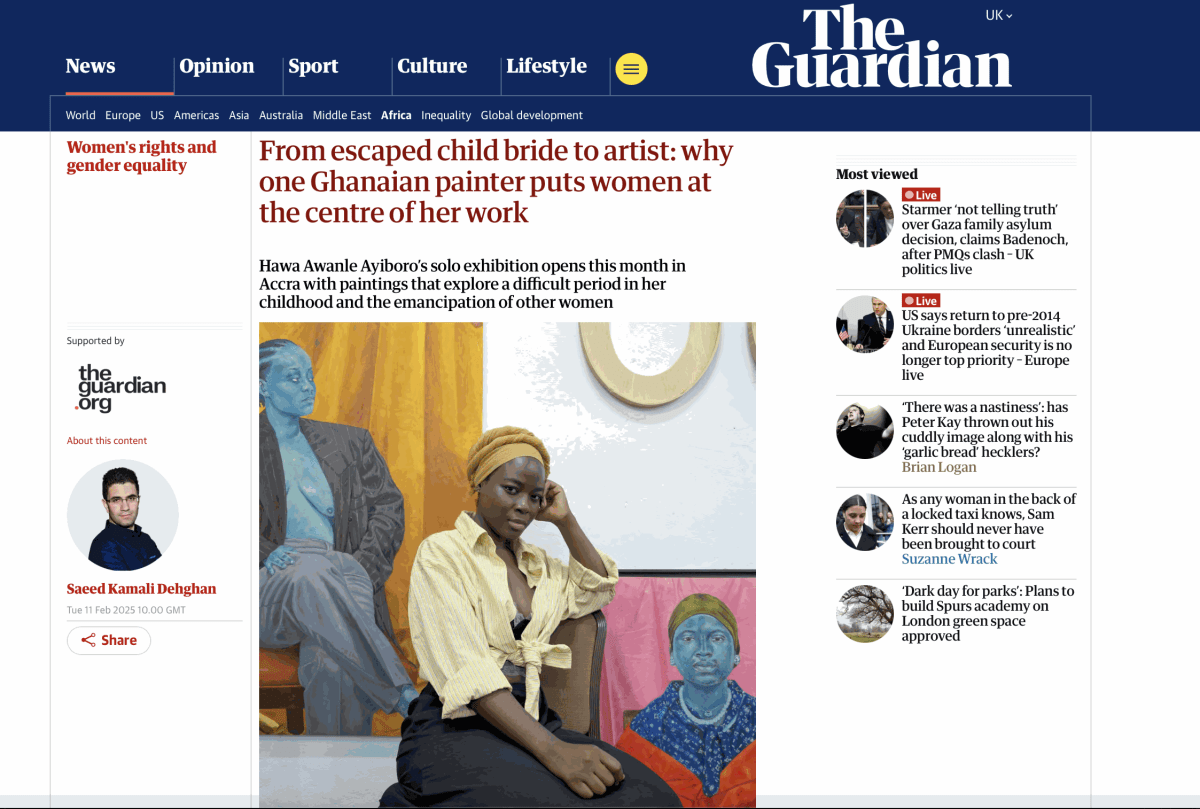Awanle Ayiboro Hawa Ali fully embodies the ethos of Édouard Manet’s assertion, “We must accept our own times and paint what we see.” In her latest series,“Fine feathers don’t make fine birds,”the series delves into the lives of two marginalized groups of young women in Accra: the Kayayei girls—female porters migrating from northern Ghana—and the Girly Girls, sex workers on Oxford Street. Through these narratives, Ayiboro interrogates themes of power, gender, survival, and agency, employing deconstructed visual elements such as men’s suiting, nudity, and Baroque reinterpretations of African female sexuality. These choices challenge entrenched Ghanaian societal norms, provoking critical questions about class, morality, and representation.
Ayiboro’s subjects exist at the intersection of societal exploitation and economic contribution. Despite enduring systemic biases and limited opportunities for women in Ghana, both groups play an essential yet overlooked role in the nation’s economic landscape. The Kayayei girls, with their relentless labor, sustain the markets of Accra, facilitating trade and commerce. The Girly Girls, by navigating taboo professions, embody a resilience that fuels the informal economy, although under the shadow of moral judgment. What does it mean for these women to be both exploited and essential? How does their contribution reshape the narrative of who holds power and agency within Ghana’s socio-economic terrain?
At the heart of Ayiboro’s work is an intense tension: these women’s roles are bound to societal taboos that constrain them, yet they carve out spaces of survival and significance. Their present realities challenge Ghana’s deeply rooted notions of womanhood, where traditional roles often bind women to domesticity and moral scrutiny.
By depicting women born into poverty and tracing their struggles, Ayiboro not only sheds light on the layers of exploitation they endure but also draws provocative parallels to the history of the Baroque. This lavish and grandiose aesthetic, celebrated as the peak of European art in the 17th and 18th centuries, is recontextualized in her work. Her semi-opulent, Baroque-inspired settings reclaim the narrative, asserting that the Baroque’s magnificence—its excess and decadence—was inseparable from the colonial exploitation of Africa, including the Gold Coast.
Ayiboro’s process was a collaborative effort, bringing together the two groups of women into the studio, in partnership with curator/artist Nana Yaa Poku Asare-Boadu. This all-female collaboration fostered an environment of trust and creativity, allowing the women to express themselves authentically. Asare-Boadu’s photography captured the raw narratives and energy of the subjects, which Ayiboro later translated onto her canvases.
Ayiboro’s work becomes an act of reclamation, challenging the colonial histories embedded in art and culture. By anchoring her depictions of contemporary Ghanaian women within this historical framework, she positions their stories as central to both past and present, making a heartfelt statement about resilience, erasure, and the enduring legacies of exploitation and beauty.
- Excerpt of Curatorial Text by Nana Yaa Poku Asare-Boadu
Download the Press Release for the full Curatorial text and for more information.



